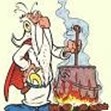Aaaron Task- "Stocks Take Skeptical View of News"
3 mensagens
|Página 1 de 1
Muito bom artigo
Continua a postar aqui essa coluna se fizeres favor
Cumprimentos
Cumprimentos
Aaaron Task- "Stocks Take Skeptical View of News"
Aaaron Task costuma fazer sempre um breve balanço do dia em www.realmoney.com . O balanço costuma ser banal mas, ocasionalmente, dá voz na sua coluna a algumas opiniões de alguns "gurus" e torna-se interessante. Deixo-vos aqui excertos do artigo de hoje, onde estão bem expostas duas (se incluirmos a dele´sáo três) opiniões antagónicas sobre o mercado.
Stocks Take Skeptical View of News
By Aaron L. Task
Senior Writer
12/05/2002 06:35 PM EST
"(...) About the only factor working in the bulls' favor these days is that volume has not accelerated during the market's five-session setback. Indeed, there has not been one day with volume meaningfully above average since Nov. 21, confirmed John Bollinger, founder of BollingerBands.com. Volume was modest again Thursday, although inclement weather on the East Coast certainly dampened activity. About 1.25 billion shares traded on the New York Stock Exchange, the lowest total since Nov. 11, and just under 1.5 billion shares in Nasdaq activity.
The lack of big volume "is a good indication that there is still a great deal of underlying bullishness, and that there is abundant cash waiting to come in on any sign of a pullback," observed RealMoneyPro.com contributor Richard Arms. "The Arms Index numbers have been quite high on down days, thereby eliminating the overbought condition of a week ago; this seems to be setting the stage for another rallying phase to get going very soon."
On Thursday, the one-day Arms Index rose 6.4% to 1.76; readings above 1.50 are generally considered signs of rising bearishness. The Arms Index measures the ratio of advancing stocks vs. declining by the ratio of up volume vs. down. The index rises and falls depending on whether volume is heavier in advancing stocks or declining issues and is used as a measure of sentiment -- which is often a contrarian indicator.
On the other hand, the absence of heavy volume accompanying the selloff is "normal and typical" at this point, according to Steven Hochberg, chief market analyst at Elliot Wave International in Atlanta. "I think [volume] will start to pick up as we stair-step lower and hit the acceleration point of the decline."
Like many skeptics, Hochberg believes the intraday highs registered Monday -- of 9043 for the Dow, 954 for the S&P and 1521 for the Comp -- will prove to be the post-Oct. 9 rally's highpoint, and levels the indices will struggle to regain for the near-to-intermediate term.
The Dow's intraday high of around 9043 represented both a 38.2% Fibonacci retracement from the all-time high in January 2000 and an approximate 50% retracement of the decline between its high on March 19, 2002, and its October low, he observed.
Additionally, the S&P 500 revisited the "underside of its large head and shoulders pattern" at its peak on Monday. "You had three resistance levels converging, suggesting it was pretty strong" resistance, Hochberg said.
Some short-term cycles suggest the current decline will persist into mid-December, possibly into the week of Christmas, before the traditional year-end rally emerges, he forecast. That rally might take major averages back toward Monday's intraday highs, but it's unlikely they break through, he continued, suggesting "the first quarter of 2003 is shaping up to be a big down quarter."
Then again, Hochberg is a hard-core bear, arguing "there is no way the October lows was the end of the bear market" from the perspective of Elliot Wave theory, sentiment and valuation. "That's three strikes against the bull."
Caught in the Middle
For the record, I agree with Hochberg that it's highly unlikely a "new bull market" that will last for years began on Oct. 9.
However, my theory is that the eight-week rally has mainly generated disbelief/skepticism in the investing class, rather than wild optimism (the Investors Intelligence numbers notwithstanding) and believe the least-expected scenario is for the rally to continue, near term. As I've written previously, my belief is the market will maintain an upward bias through year-end and into early 2003, the potential for short-term pullbacks notwithstanding.
I'm still so inclined and feel compelled to point this out because several readers apparently misinterpreted an earlier story with the term "Rally-Killer" in the headline as a sign of wild negativity on my part. (If you want to use me as a contrarian indicator, go for it, just make sure you know where I'm coming from first.)
That said, now five days of pullback is apt to generate a more negative tone in my column, which is mainly intended to reflect what is happening and what market participants are saying, rather than what I think will or should happen."
(in www.realmoney.com)
Stocks Take Skeptical View of News
By Aaron L. Task
Senior Writer
12/05/2002 06:35 PM EST
"(...) About the only factor working in the bulls' favor these days is that volume has not accelerated during the market's five-session setback. Indeed, there has not been one day with volume meaningfully above average since Nov. 21, confirmed John Bollinger, founder of BollingerBands.com. Volume was modest again Thursday, although inclement weather on the East Coast certainly dampened activity. About 1.25 billion shares traded on the New York Stock Exchange, the lowest total since Nov. 11, and just under 1.5 billion shares in Nasdaq activity.
The lack of big volume "is a good indication that there is still a great deal of underlying bullishness, and that there is abundant cash waiting to come in on any sign of a pullback," observed RealMoneyPro.com contributor Richard Arms. "The Arms Index numbers have been quite high on down days, thereby eliminating the overbought condition of a week ago; this seems to be setting the stage for another rallying phase to get going very soon."
On Thursday, the one-day Arms Index rose 6.4% to 1.76; readings above 1.50 are generally considered signs of rising bearishness. The Arms Index measures the ratio of advancing stocks vs. declining by the ratio of up volume vs. down. The index rises and falls depending on whether volume is heavier in advancing stocks or declining issues and is used as a measure of sentiment -- which is often a contrarian indicator.
On the other hand, the absence of heavy volume accompanying the selloff is "normal and typical" at this point, according to Steven Hochberg, chief market analyst at Elliot Wave International in Atlanta. "I think [volume] will start to pick up as we stair-step lower and hit the acceleration point of the decline."
Like many skeptics, Hochberg believes the intraday highs registered Monday -- of 9043 for the Dow, 954 for the S&P and 1521 for the Comp -- will prove to be the post-Oct. 9 rally's highpoint, and levels the indices will struggle to regain for the near-to-intermediate term.
The Dow's intraday high of around 9043 represented both a 38.2% Fibonacci retracement from the all-time high in January 2000 and an approximate 50% retracement of the decline between its high on March 19, 2002, and its October low, he observed.
Additionally, the S&P 500 revisited the "underside of its large head and shoulders pattern" at its peak on Monday. "You had three resistance levels converging, suggesting it was pretty strong" resistance, Hochberg said.
Some short-term cycles suggest the current decline will persist into mid-December, possibly into the week of Christmas, before the traditional year-end rally emerges, he forecast. That rally might take major averages back toward Monday's intraday highs, but it's unlikely they break through, he continued, suggesting "the first quarter of 2003 is shaping up to be a big down quarter."
Then again, Hochberg is a hard-core bear, arguing "there is no way the October lows was the end of the bear market" from the perspective of Elliot Wave theory, sentiment and valuation. "That's three strikes against the bull."
Caught in the Middle
For the record, I agree with Hochberg that it's highly unlikely a "new bull market" that will last for years began on Oct. 9.
However, my theory is that the eight-week rally has mainly generated disbelief/skepticism in the investing class, rather than wild optimism (the Investors Intelligence numbers notwithstanding) and believe the least-expected scenario is for the rally to continue, near term. As I've written previously, my belief is the market will maintain an upward bias through year-end and into early 2003, the potential for short-term pullbacks notwithstanding.
I'm still so inclined and feel compelled to point this out because several readers apparently misinterpreted an earlier story with the term "Rally-Killer" in the headline as a sign of wild negativity on my part. (If you want to use me as a contrarian indicator, go for it, just make sure you know where I'm coming from first.)
That said, now five days of pullback is apt to generate a more negative tone in my column, which is mainly intended to reflect what is happening and what market participants are saying, rather than what I think will or should happen."
(in www.realmoney.com)
3 mensagens
|Página 1 de 1
Quem está ligado:
Utilizadores a ver este Fórum: A_investidor, Google [Bot], latbal, m-m, paulopereira.pp36.pp, Sertorio e 51 visitantes



